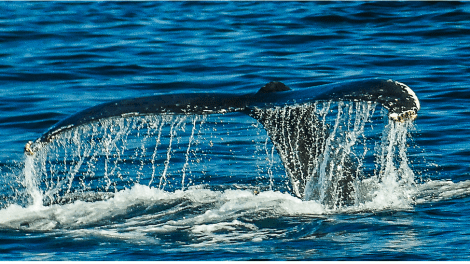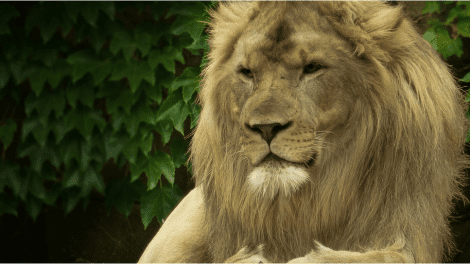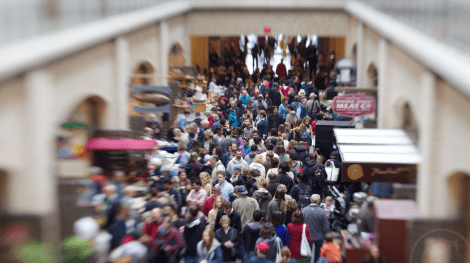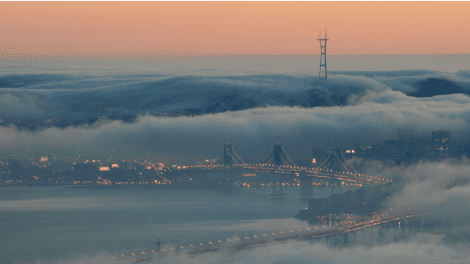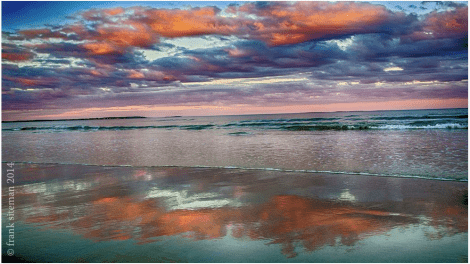DPA Magazine
Tail of the whale
From Don Peters/ DPA instructor in Chicago To view more of his images please visit http://digitalphotoacademy.com/portfolio/donald-peters/ They say that timing is everything. On a whale watching excursion in Sitka, Alaska from a small boat, I quickly learned the rhythms of these mighty leviathans. Breaching the surface after minutes below, they would slowly roll together through the sea for about six or eight times, filling their huge lungs with air. Seemingly on cue, the entire pod would suddenly take one higher-than –normal roll, arching their backs and then dive again, together, into the depths. At that final moment, they would display their flukes, as if waving goodbye. A fast (1/4000) shutter speed in the moving boat was necessary to freeze the tail—and the water streaks and droplets cascading down, just before the tail disappeared below the waves. Also, setting the camera in “burst” mode (10 frames per second) increased the chances of getting a “keeper” shot. As photographers, we need to learn the simple cycles of nature to be ready for these moments---and to understand and overcome our own impatient tendencies! (Nikon D300 with 18-200mm Nikkor lens at 200mm, ISO 800, 1/4000 at f/4.5).
Sky activity
From Don Peters/ DPA Instructor in Chicago To view more of his images please visit http://digitalphotoacademy.com/portfolio/donald-peters/ From my 52nd floor perch on a friend’s condo balcony, my senses were filled by the exciting sights and sounds of the famed Navy Blue Angels at the Chicago Air Show. My high position enabled me to shoot down on the colorful jets, with the bobbing yachts on Lake Michigan providing a pleasing background perspective. The Blue Angels came by VERY fast, with little warning as they preceded the roar of their engines by a second or two. So, the challenge was to use not only a very fast shutter speed, but to be ready and to pan the camera in synch with the jets as they streaked by. Practice makes perfect and it took some adjustment and practice to achieve this shot. Shooting in the “burst” mode (10 frames per second) also gave me an array of images, from which to choose the best. (Nikon D300 with 28-300mm Nikkor lens at 300mm, ISO 400, 1/4000 at f/4.5)
Photographing the Beach
From Don Peters/ DPA instructor in Chicago To view more of his images please visit http://digitalphotoacademy.com/portfolio/donald-peters/ Look down! On a 52nd floor balcony, overlooking Chicago’s Gold Coast, I had the world before me. The grandeur of Lake Michigan was enhanced with all sorts of watercraft and the surrounding, majestic skyscrapers of Chicago. That afternoon, even the Navy Blue Angels were flying by, screaming for photographic attention. However, something compelled me to simply point my camera straight down to the tawny beach below, dotted with sunbathers and colorful umbrellas. The random pattern of humanity at play “spoke to me,” and I captured this shot of summer in the city. To me, besides rendering an interesting pattern, the shot creates the question, the wonder as to what activities, conversations, hopes and dreams are going on within the multitudes milling about below. (Nikon D300 with 28-300mm Nikkor lens at 200mm, ISO 200, 1/500 at f/11)
Rhino at zoo
From Don Peters/ DPA instructor in Chicago To view more of his images please visit http://digitalphotoacademy.com/portfolio/donald-peters/ Catching this rhino, moving about his mostly contrived zoo enclosure was a tough one. Fortunately, I was able to finally position myself in such a way as to eliminate the “clutter” of the man-made artifacts in the background (and foreground), to give the shot a more natural look. Also, the “gesture” of the animal made this shot, as this mighty and bulky beast took a moment to lower himself on one foreleg, reminded me of a portly old man reverently genuflecting in church. (Nikon D300 with 18-200mm Nikkor lens at 180mm, ISO 400, 1/500 at f/4.5)
Lion in a zoo
From Don Peters/ DPA instructor in Chicago To view more of his images please visit http://digitalphotoacademy.com/portfolio/donald-peters/ I love shooting animals…with my camera. However, as a “city boy,” it’s tough. Sometimes I get out of town and actually find animals roaming about, but much more often, I find fabulous creatures to shoot at the zoo. The challenge is to remove the “zoo” from the shot. Background is everything since often it’s something else in the frame that gives the zoo away. This problem can be handled somewhat by a blurred background (using a wide aperture (e.g. f/4), but if the animal is far away from the camera, the lens optics and the laws of physics often defeat that idea. So, I’ve found the key is to “zoom with my feet,” to move about to get that perfect line-up between the camera, the subject and a non-descript background. And, of course, some blur or other post processing technique can be used later to conceal any remaining clutter. Here, this noble lion “cooperated” by lying stationary and I was able to position myself between he and some “zoo rocks.” My patience was rewarded when Leo looked my way for a moment and I was able to capture the noble “gesture” of the king of beasts, looking out over his kingdom. Patience is key in animal photography. We must patiently wait until that creature offers a gesture, or displays an attitude. Often this is a subtle thing. Taking lots of exposures will increase your odds of capturing “the moment.” (Nikon D300 with 18-200mm Nikkor lens at 200mm, ISO 400, 1/500 at f/4.5)
Capturing Fireworks
From Josh Anon/ DPA instructor in San Francisco To view more of his images please visit http://digitalphotoacademy.com/portfolio/josh-anon/ I am a big believer in pre-visualizing photos and then executing them. Even if your pre-visualization isn’t perfect, it gives you purpose and lets you actively plan for a shot instead of reacting to what’s around you. In this case, I knew that for the fourth of July, San Francisco would have a big fireworks show downtown, and the forecast was (unusually) fog-free. That meant I had a chance to create a unique image of San Francisco, with the Golden Gate Bridge (the most distinctive icon that immediately screams “San Francisco” to a viewer) and fireworks. I knew of a good spot in the Marin headlands and arrived hours in advance, expecting a crowd and wanting a parking spot. A lot of photography involves patience! I framed this shot up before the fireworks started balancing where the bridge is and where I roughly estimated the fireworks would be, based on what I saw in the paper. To shoot, I put my camera in bulb mode, held a piece of cardboard in front of the lens between fireworks bursts, and exposed each image for 2-3 firework bursts. While the fireworks are a tad over-exposed, I still like the shot because of how the intense brightness and shapes from the falling embers contrasts with the darkness in the rest of the frame, just like when you see fireworks with your naked eye. Canon EOS 1Ds with Canon EF 16-35 f/2.8L at 35mm on a tripod. f/5.6, 8 sec, ISO 200.
Finding a Crowd
From Josh Anon/ DPA instructor in San Francisco To view more of his images please visit http://digitalphotoacademy.com/portfolio/josh-anon/ A small change in perspective can make a big impact in the photos we create. The San Francisco Ferry Building is often quite crowded during the Saturday morning farmers market, but when you’re down in it the crowd, it’s tough to capture the feeling you have of being there. By finding stairs to a second floor, I was able to find a unique perspective, looking down at the crowd and showing how dense it was. However, if I just took this with a regular lens, even at a small f-number, the crowd would read as a texture and the photo would lack a subject. Instead, I used a Lens Baby to bring selective focus to just one part of the crowd, specifically an area squished in the middle of the crowd. This blurred the crowd in such a way that it didn’t read as a texture (some is blurred and some isn’t), and it makes it clear that the focus of the photo (pardon the pun) is the crazy crowd. Additionally, the lines in the wall converge, further brining your attention to the in-focus area. Canon EOS 1D MkIV with Lens Baby Composer. f/4, 1/60 sec, ISO 400
Bridges and Fog
From Josh Anon/ DPA instructor in San Francisco To view more of his images please visit http://digitalphotoacademy.com/portfolio/josh-anon/ Even though Mark Twain never actually said the coldest winter he’d ever had was a summer in San Francisco, the near-daily fog does make for some cold summers. And some beautiful pictures! The bay area’s geography is also unique in that there are hills in the east bay, and the hills are often a demarcation line for the fog. Depending on the weather conditions, there are days where a low, thick bank of fog rolls into the bay but below the top of the hills. This makes it so that you can get a great vantage point, looking across the city and seeing where the fog is. I was in the hills on one such day, guessing the weather conditions would be correct, but I arrived before sunset and before I could see for sure what the fog was doing. As the sun started to set, the fog moved across the bay. A long lens on a tripod (roughly 400mm) let me isolate the features that make the scene say “San Francisco,” that is the bay bridge, Sutro tower, and the downtown skyline. Even though the fog covers most of them, you still have a sense of geography. Waiting for the lights to come on also added a nice element to the shot, a bit of warmth and brightness contrasting with the fog. Canon EOS 1Ds with Canon EF 100-400mm f/4.5-5.6L IS on a tripod at 400mm. f/16, 1.6 sec, ISO 100, -2/3 stops in evaluative metering.
Motorcycles Street Scene
From Josh Anon/ DPA instructor in San Francisco To view more of his images please visit http://digitalphotoacademy.com/portfolio/josh-anon/ I often carry a Sony RX1 with me, as it’s got great image quality in a very compact form factor. I don’t always want to carry a big DSLR. Especially on photo trips, when I’m in a different environment, even when I’m not shooting my main subjects, I often see opportunities for interesting photos that make me want a camera. This street scene is one such example, as I saw it while leaving dinner in China, near Mongolia one evening. I liked the row of bikes and the people walking, as it captured how the town felt. The converging lines into the distance added depth and visual intensity, and the warm colors on the signs provided a nice balance to the cool shadows. And as I framed up a shot, I saw a car starting to drive down the street. I quickly focused and shot a burst, getting the car in different positions. It was sheer luck that this one guy looked back at me (it’s possible I swore when I saw the car and rushed to get the shot setup), creating a nice connection between the photo and the viewer. Sony RX1 at 35mm, f/2, 1/80 sec, ISO 6400
Symmetry, timing, and simplicity
From Frank Siteman/ DPA instructor in Boston To view more of his images please visit http://digitalphotoacademy.com/portfolio/frank-siteman/ Symmetry, timing and simplicity are the backbone of many stand-out images. This photo was taken while on a casual, end of day walk along the shoreline at Old Orchard Beach in Ogunquit, Maine. As the sun was setting behind me, only the clouds were being directly illuminated, creating a scene with an intense, warm-cool (yellow/blue) color contrast. Adding to this, was the reflection of the sky on the mirror-like, smooth sand beach, that appeared with each retreating wave, making the timing of the exposure an important factor. Choosing a wide angle allowed for the inclusion of the most real estate (keeping both the actual clouds and their reflections on the sand) and enabled me to work with a slowish shutter speed of a 1/15th sec with an aperture of f/8.0, holding focus from the foreground to the horizon. This was a situation where breaking the “rule of thirds” allowed for a more dynamic image. Camera was Canon 5D, ISO 200 and using a 24mm focal length with a 24-105 IS lens.

